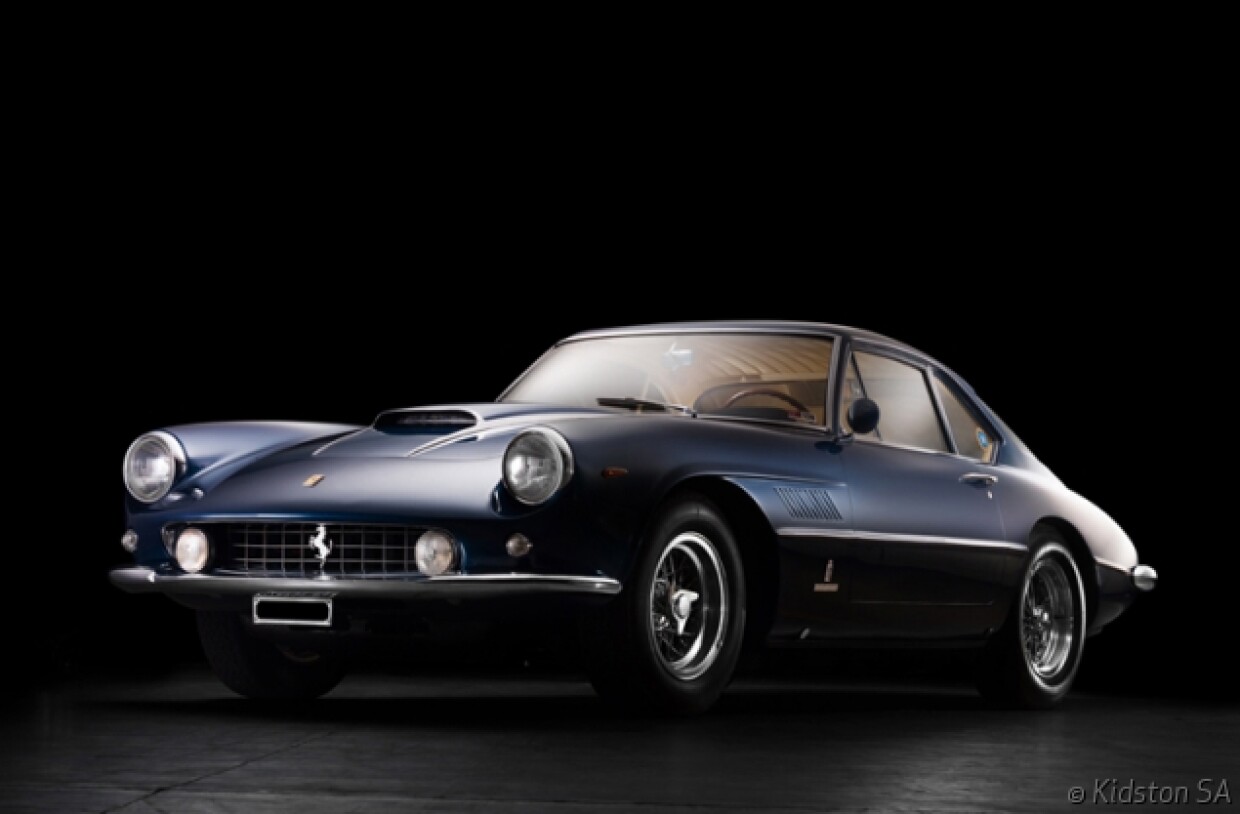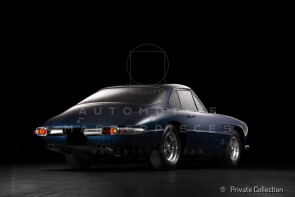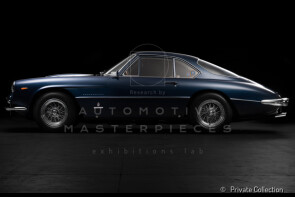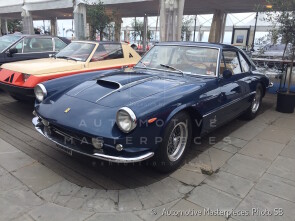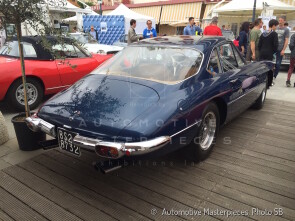
1962 Ferrari 400 Superamerica
ON/OFF
Why am I an Automotive Masterpiece?
Discerning clients in search of speed, exclusivity and bespoke refinement—industrialists, financiers, royalty and entertainers—formed a small but influential market that shaped Ferrari’s reputation throughout the 1950s and 1960s. The 400 Superamerica reflects Ferrari’s dedication to building cars of exceptional power, elegance and prestige, tailored to this sophisticated international clientele capable of appreciating the fusion of mechanical excellence and handcrafted execution. The “Superamerica” designation embodies this philosophy, blending advanced Italian engineering with the highest standards of bespoke coachbuilding. The Ferrari 400 Superamerica was introduced in 1959 as the natural successor to the 410 Superamerica, continuing the concept of the “Superamerica” models, which since the 342 of 1952 had represented the most powerful and exclusive road-going Ferraris, originally targeted primarily at the North American market. The 400 maintained broadly similar external dimensions to the 410, but it adopted a shorter wheelbase—2,420 mm in its first version—which enhanced handling and imparted a more agile character. The model was produced in two distinct series: a first short-wheelbase (SWB) series, and a later long-wheelbase (LWB) series with an extended 2,600 mm wheelbase, improving stability and long-distance comfort. Many cars were tailored individually to the specifications of their owners, and some were unique, one-off builds. The model designation was a departure for Ferrari: the 400 Superamerica was the first production Ferrari named for its total engine displacement, rather than the displacement of a single cylinder—a practice dating back to the 125. The engine was no longer the fixed-head “long block” V12 designed by Aurelio Lampredi, but a reworked casting of Gioachino Colombo’s original removable-head “short block” V12, now revised with spark plugs mounted outside the engine’s vee. The “Tipo 163” engine and its derivatives would go on to power Ferrari's V12 models for over a decade. Displacing 3,967 cc, it featured a single overhead camshaft per bank and three Weber 42 DCZ/4 carburetors (or in some cases, Weber 46), and it developed between 340 and 360 horsepower, depending on the configuration—delivering strong performance with a smooth, progressive response. The earliest cars were equipped with a 4-speed gearbox and Laycock-de Normanville overdrive; later cars adopted a 5-speed transmission without overdrive. The two production series differed primarily in chassis layout: Series I (1959–1962) was built on the Tipo 538 chassis with a 2,420 mm wheelbase. Series II (1962–1964) retained the same Tipo 538 chassis architecture, revised to accommodate a 2,600 mm wheelbase for improved stability and interior space. The chassis was a steel tubular frame, consisting of two large oval-section longitudinal members that passed over the rear axle—an arrangement similar to that of the 410—and reinforced by cross-braces for rigidity. The suspension was traditional: independent double wishbones with a stabilizer bar at the front, and a live rear axle with semi-elliptic leaf springs, twin trailing arms, and coil springs at the rear. Koni telescopic shock absorbers replaced the earlier lever-arm type, improving damping control. The original drum brakes were eventually replaced with Dunlop disc brakes all around, becoming standard equipment on Series II cars. Pininfarina introduced the prototype of the Coupé Aerodinamico at the Salone dell’Automobile in Torino in November 1960. Known as the “Superfast II,” it represented a radical departure from the conventional, angular three-box design of the 250 GT coupé. It featured a low oval air intake, concealed pop-up headlamps, a bonnet scoop for cold air, steeply raked windscreen, inward-sloping side glass and pillars, and a long rear window tapering to a near-teardrop tail—an integrated aerodynamic design throughout. Pininfarina was also responsible for the final assembly of the 400 Superamerica in Torino. Compared to the 410 Superamerica—which had indulged contemporary American styling with wraparound windshields, tail fins and lavish chrome—the design of the 400 Superamerica was more restrained and forward-looking. It reflected a careful evolution in line with Enzo Ferrari’s preference for functionality and sobriety. Its masses were well-balanced, and the car’s ends were smoothly tapered and aerodynamic. The front treatment, with faired or exposed headlamps depending on specification, retained the character of the earlier 250 GT models but with a lower, sleeker stance. The long silhouette in proportion to the cabin echoed the aerodynamic sensibility of the time and anticipated themes further developed in the 500 Superfast. The most recognizable variants were the Coupé Aerodinamico, the long-wheelbase Coupé, and the Cabriolet, all built in very limited numbers and with extensive personalization. Some examples featured covered rear wheelarches, others had lowered rooflines, further reflecting the semi-bespoke nature of production. No two examples were exactly alike. The 400 Superamerica also left a strong impression on the cultural imagination. A unique version built for Gianni Agnelli, widely reported in the society press of the day, became emblematic of the model’s prestige. Another car featured prominently in Il Tigre (1967), directed by Dino Risi, where it appeared as the on-screen vehicle of Vittorio Gassman’s character—one of the few times a Ferrari road car took on a narrative role in Italian cinema. A total of approximately 46 examples of the Ferrari 400 Superamerica were built across all variants.
Ferrari 400 Superamerica Series I Coupé Aerodinamico with chassis no. 3361/SA is one of the last of the short wheelbase examples. According to veteran Ferrari historian Antoine Prunet, Pininfarina’s records show that the chassis entered their coachworks on 18th December 1961 and the completed car left on 10th March 1962 with internal reference number 99537. It was displayed, along with Pininfarina's design exercise “Superfast III” and a 400 Superamerica Pininfarina Cabriolet, at the 1962 Geneva Salon, as noted in its extensive documentation file. Finished in Blu Notte (midnight blue, Italver paint code 18943M) with natural Connolly leather upholstery (code 3309), it was bought at the show by Mr. Giuseppe Brainovich. It is one of only some thirteen short wheelbase Series I 400 Superamerica Coupé Aerodinamico, among the most beautiful and rare Ferraris built.
